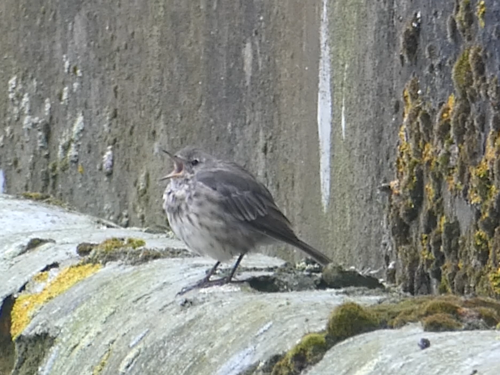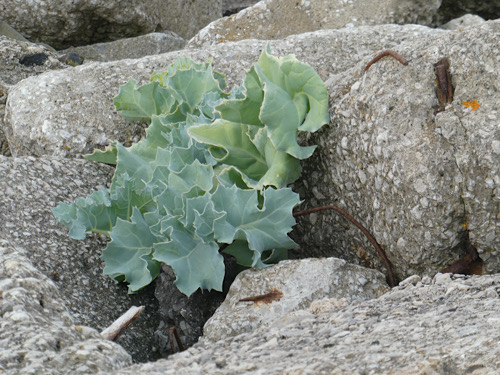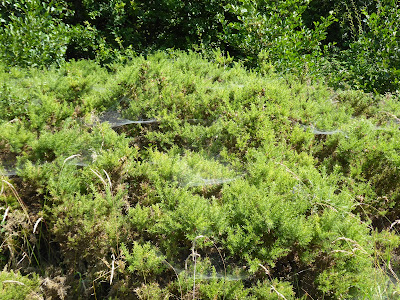The day started with a light south breeze, but it soon swung back to the west and freshened. Still very hot and sunny.
Ocean Edge and Red Nab - high water 09:25
There were 525 gulls roosting on the mud just out from the saltmarsh
 |
There were 525 gulls in this first wave of gulls, there was a smaller
roost further out and the dark line in the distance are Curlew |
The gulls were mainly Black-Headed but also included:
Mediterranean gull 10 - 8 adult, 1 x 3rd calendar year and 1 juvenile. There were also 2 additional adult on Red Nab
Sandwich Tern 5 - there were two adult and 3 juvenile flying around.
 |
| Four of the Sandwich Terns |
Wooden Jetty area - early evening.
No.1 outflow was exceeding busy with feeding gulls.
It looked promising, not just for this evening, but for the future, this outflow has not been attracting many gulls for a while. It was mainly Black-Headed gulls today but within 5 minutes all feeding had stopped!
 |
Whatever had caused the feeding frenzy, it was over,
and the gulls rested on the beach on either side of the outflow |
The water jet dredger was operating in the harbour, I suspect that it either drove a surge of small fish and/or shrimps through the intake, or possibly it stopped the feeding by causing suspended silts to colour the outflow. While I'm on the subject of dredging (MD), the mud level on the beach next to the wooden jetty is about 15cm higher than normal, likely caused by the long spell of calm weather and continuous westerlies, but I suspect the dredging operations make a contribution.
In theory rising mud height shouldn't make much difference to the sand mason worms, they can easily extend their tubes. But it might make a difference to how easily they can be caught, possibly they can retreat further and the soft nature of the mud may give them advanced warning of approaching webbed feet!
 |
This drain through the mud shows the extra depth,
the normal level is the bottom of the drain |
 |
This is a shot of the mud just below the sea wall
You can see the tips of the sand mason worm tubes, but only just |
 |
| This is the same area of mud on 19 July last year |
Whatever the cause, there were only 4 Mediterranean gulls on the beach this evening and neither they or the resting BHGs were trying to feed on sand mason worms,
Heysham skear - low water 16:30
Great Crested Grebe 1
Little Egret 4
Curlew c60
Turnstone 7 on mid skear plus 14 on inner skear
Redshank 150+ the largest flock was 140 and there were smaller flocks and individuals around
Knot 1 in partial summer plumage with largest flock of Redshank.
Again the Redshank and Kont headed off east.
Whenever I meet someone who routinely reads these posts they tend to comment as to how they find the more unusual stuff the most interesting, and "green jelly blobs" are often quoted as an example (see post 6/03/21 MD).
As I approached the very edge of the inner skear today I came across this red blob of jelly.
 |
| It wasn't obvious what it was so I lifted it out for a closer look |
The water was extremely warm, it was only a shallow pool and probably not been covered by the sea for a couple of days. When I had it out it was obvious that it was a Beadlet Anemone, it had been upside down in the water. I carried it back to a deeper pool further out, it repaid the jesture by sticking to my hand like a leach.
 |
| Beadlet Anemone |
I found a deeper pool with moving water, even that was warm, but not as hot as the shallow pool. I placed the anemone on the smoothest stone I could find, it isn't as level as it looks on this picture, probably about a 20 degree incline. Even so, I was disappointed when it "fell over". The tiny crab just to the top left of the anemone as it fell over, had a lucky escape!
So I replaced it in the bottom corner of the same stone, this time success. Its tentacles opened immediately and it appeared to be fine, although not yet securely anchored.














































